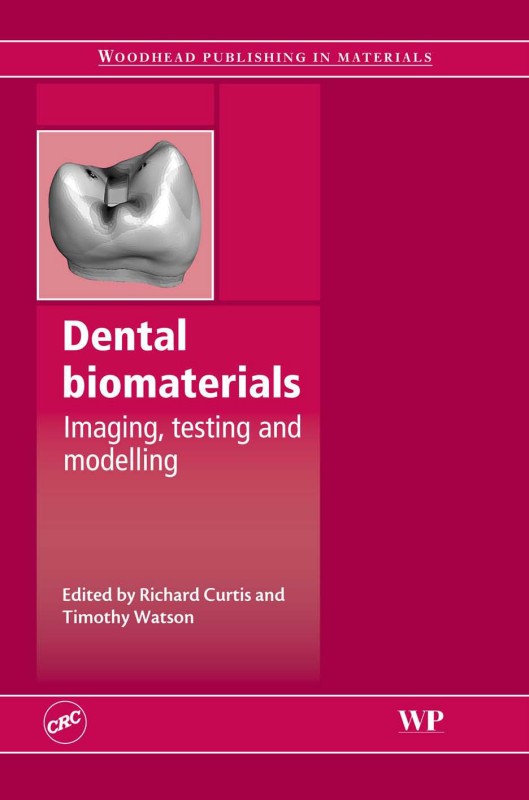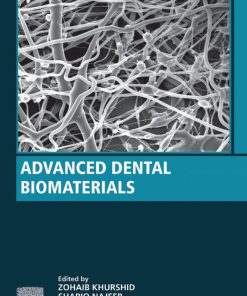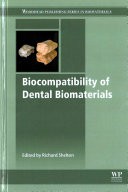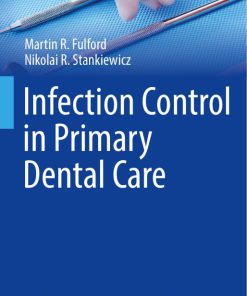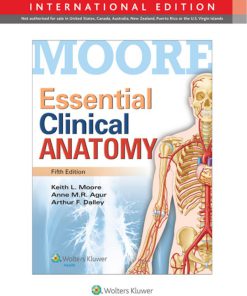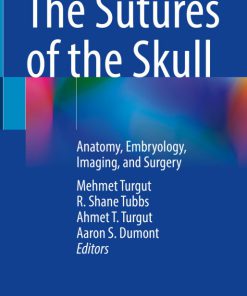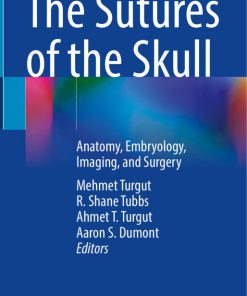Dental Biomaterials Imaging Testing and Modelling 1st Edition by R V Curtis, T F Watson ISBN 1845692969 9781845692964
$50.00 Original price was: $50.00.$25.00Current price is: $25.00.
Authors:Woodhead Publishing; (March 25, 2008) , Author sort:Publishing;, Woodhead , Published:Published:Jun 2010
Dental Biomaterials: Imaging, Testing and Modelling 1st Edition by R V Curtis, T F Watson – Ebook PDF Instant Download/Delivery. 1845692969, 9781845692964
Full download Dental Biomaterials: Imaging, Testing and Modelling 1st Edition after payment
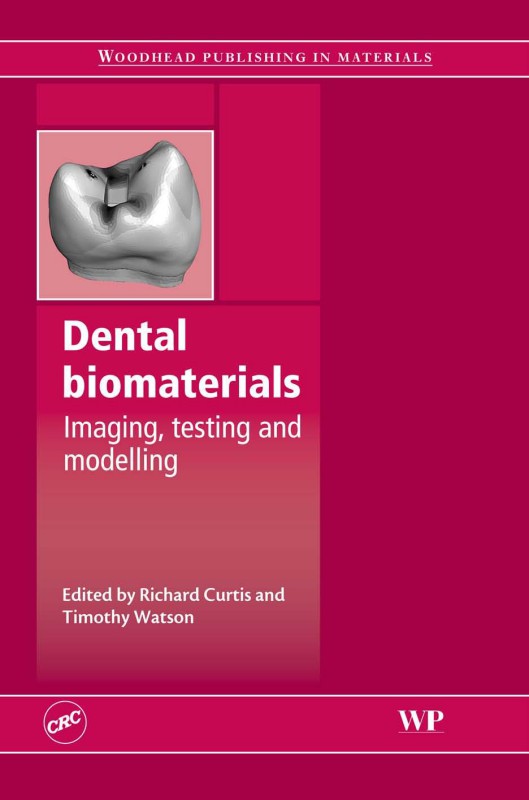
Product details:
ISBN 10: 1845692969
ISBN 13: 9781845692964
Author: R V Curtis, T F Watson
Dental Biomaterials: Imaging, Testing and Modelling reviews the materials used in this important area, their performance and how such performance can be measured and optimised. Chapters review optical and electron microscopy imaging techniques for dental biomaterial interfaces. Specific materials such as dental cements, fibre-reinforced composites, metals and alloys are discussed. There is an analysis of stresses, fracture, wear and ageing in dental biomaterials as well as an evaluation of the performance of dental adhesives and resin-dentin bonds. Chapters also review ways of assessing the performance of dental handpieces, crowns, implants and prosthesies. The book also reviews the use of computer models in such areas as bond strength and shape optimisation of dental restorations.
With its distinguished editors and team of experienced contributors DDental Biomaterials: Imaging, Testing and Modelling researchers, materials scientists, engineers and dental practitioners with an essential guide to the use and performance of dental biomaterials.
- An essential guide to the use and performance of dental biomaterials
- Reviews optical and electron microscopy imaging techniques for dental biomaterial interfaces
- Analyses stresses, fracture, wear and ageing in dental biomaterials and evaluates the performance of dental adhesives and resin-dentin bonds
Dental Biomaterials: Imaging, Testing and Modelling 1st Table of contents:
1 Characterizing the performance of dental air-turbine handpieces
1.1 Outline
1.2 General importance: applications, benefit
1.3 Historical outline: development, features
1.4 Importance with respect to cutting: work done vs. power in, duty cycle, load, nature of substrat
1.5 Testing: equipment, procedure, calculations
1.6 Hazards
1.7 Factors in selection and operation
1.8 Future trends
1.9 References
2 Optical imaging techniques for dental biomaterials interfaces
2.1 Introduction
2.2 Confocal microscopy
2.3 Conventional fluorescence and reflection imaging
2.4 Imaging water transit in materials
2.5 Imaging moisture-sensitive materials
2.6 Multi-photon imaging: deeper penetration
2.7 Fluorescence lifetime imaging
2.8 High-speed imaging of dynamic events within materials
2.9 Conclusion
2.10 References
3 Electron microscopy for imaging interfaces in dental restorations
3.1 The transmission electron microscope (TEM)
3.2 The scanning electron microscope (SEM)
3.3 Summary
3.4 References
4 Dental adhesives and adhesive performance
4.1 Introduction
4.2 The smear layer as an ‘obstacle’ to bonding
4.3 The hybridization process
4.4 Current concerns of one-step adhesives
4.5 Clinical performance of current adhesives
4.6 Conclusion
4.7 References
5 Mechanical stability of resin–dentine bonds
5.1 Introduction
5.2 Permeability of adhesive resins to water
5.3 Permeability of dentine
5.4 Hydrophilic versus hydrophobic properties of resins
5.5 Mechanisms responsible for degradation of resin–dentine bonds
5.6 Summary
5.7 Acknowledgments
5.8 References
6 Dental cements: formulations and handling techniques
6.1 Introduction
6.2 Zinc phosphate cements
6.3 Zinc polycarboxylate cements
6.4 Conventional glass-ionomer cements
6.5 Resin-modified glass-ionomer cements
6.6 Traditional resin luting cements
6.7 Self-adhesive resin cements
6.8 Summary
6.9 References
7 Mixed-methods approach to wear evaluation in posterior composite dental restorations
7.1 Introduction
7.2 Qualitative methods of wear evaluation
7.3 Quantitative methods of wear evaluation
7.4 Integrating diverse methods
7.5 A case study – spanning paradigms and combining methods
7.6 Future trends
7.7 References
8 Shape optimization of dental restorations
8.1 Introduction
8.2 Methods
8.3 Application
8.4 Summary
8.5 References
9 Fibre-reinforced composites for dental applications
9.1 Introduction
9.2 Structure and properties of fibre-reinforced composites
9.3 Removable dentures
9.4 Fixed partial dentures
9.5 Periodontal splints and retainers
9.6 Root canal posts
9.7 Future trends
9.8 Summary
9.9 References
10 Fracture mechanics characterization of dental biomaterials
10.1 Introduction
10.2 Theoretical considerations
10.3 Determination of fracture toughness
10.4 Fatigue crack propagation (FCP)
10.5 Fracture mechanics and dentistry
10.6 Summary
10.7 References
11 Modelling bond strength in dental biomaterials
11.1 Introduction
11.2 Rationale for bond strength testing
11.3 Classification of dental adhesive testing techniques
11.4 Behavioural adhesive tests
11.5 Structural adhesive tests
11.6 Future trends
11.7 Summary
11.8 References
12 Fracture and aging of dentine
12.1 Introduction
12.2 Structure and chemistry
12.3 Elastic behavior and strength
12.4 Fatigue and fatigue crack growth
12.5 Fracture
12.6 Summary
12.7 Acknowledgements
12.8 References
13 Finite element analysis of stresses in dental crowns
13.1 Overview of finite element analysis
13.2 Finite element models for indirect restorations
13.3 Challenges involved in deriving material properties for finite element analysis
13.4 Clinical significance
13.5 Summary
13.6 References
14 Testing the performance of dental implants
14.1 Introduction: an overview of systems and their development
14.2 Biomechanical response to loading
14.3 The implant–abutment connection
14.4 Mechanical complications
14.5 Design variations within dental implant systems
14.6 Overview of dental implant systems
14.7 Testing dental implant assemblies
14.8 Stress analysis of the bone–implant interface
14.9 Summary
14.10 References
15 Superplastic forming of dental and maxillofacial prostheses
15.1 Introduction
15.2 Superplastic Prosthetic Forming – a process for the hot forming of titanium alloys for biomed
15.3 Finite element modelling and superplastic forming simulation of SPF
15.4 Geometrical modelling and superplastic forming simulation
15.5 Ceramic die materials for superplastic forming in dentistry and medicine
15.6 Dental implant superstructures and surgical repair of a defect or deformity of the skull (crani
15.7 Multiscale simulation of the reactivity and biocompatibility of superplastic titanium alloy pro
15.8 Future trends
15.9 References
16 Dental investment materials for casting metals and alloys
16.1 Introduction
16.2 Chemistry and structure of binders in established silica-based dental casting investment materi
16.3 New investment materials – responding to the challenge of casting titanium
16.4 Surface coating the internal surface of the mould
16.5 The chemistry of new investment materials
16.6 Effect of the hardened surface layer upon the properties of a titanium dental casting
16.7 Issues concerning silica-based phosphate-bonded investment
16.8 Rapid casting
16.9 Conclusions
16.10 Acknowledgement
16.11 References
People also search for Dental Biomaterials: Imaging, Testing and Modelling 1st:
dental biomaterials- imaging, testing and modelling
dental biomaterials imaging testing and modelling
what is used in medical imaging
dental biomaterials
dental material testing
You may also like…
eBook PDF
Biocompatibility of Dental Biomaterials 1st edition by Richard Shelton ISBN 0081009437 9780081009437

